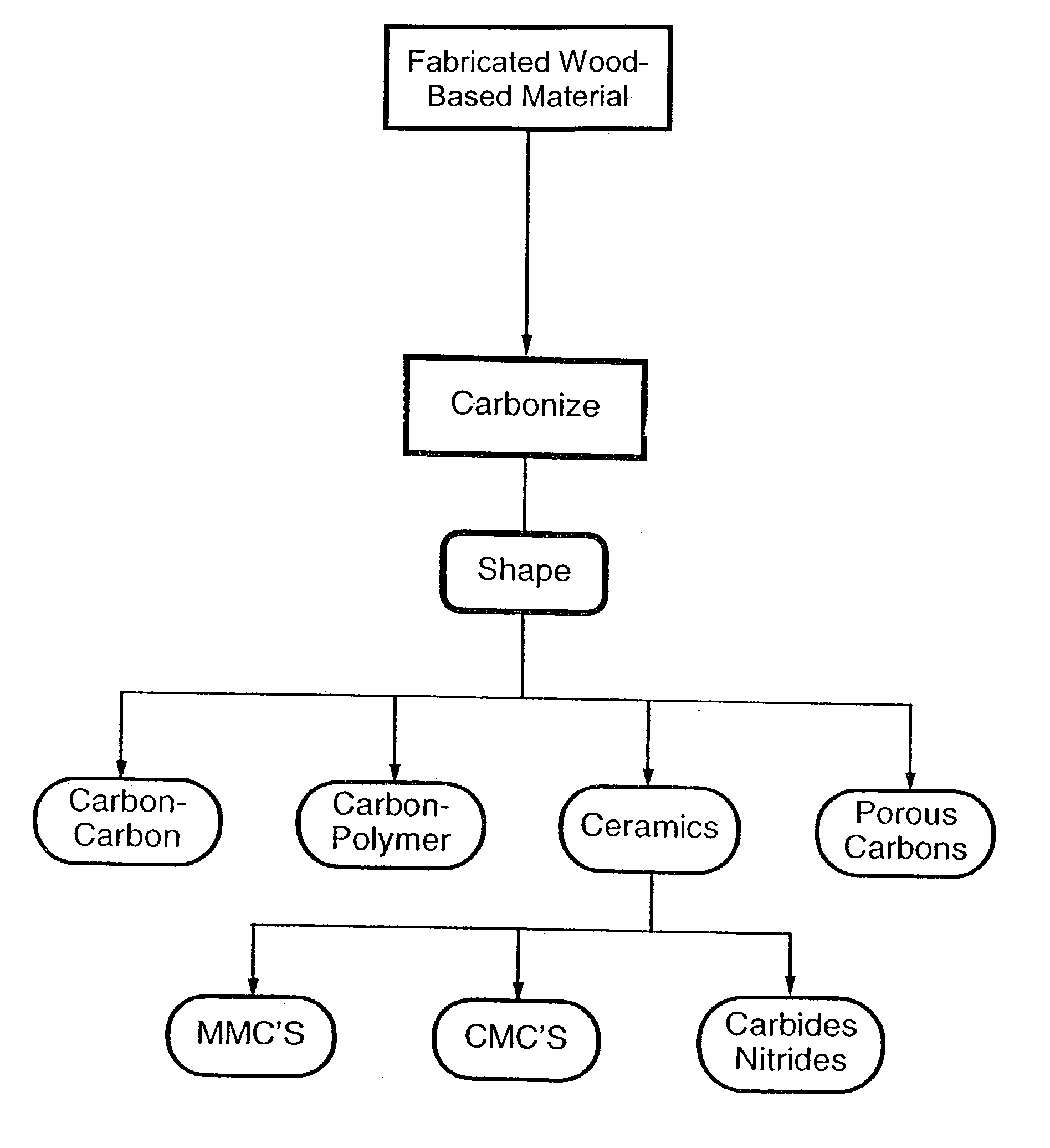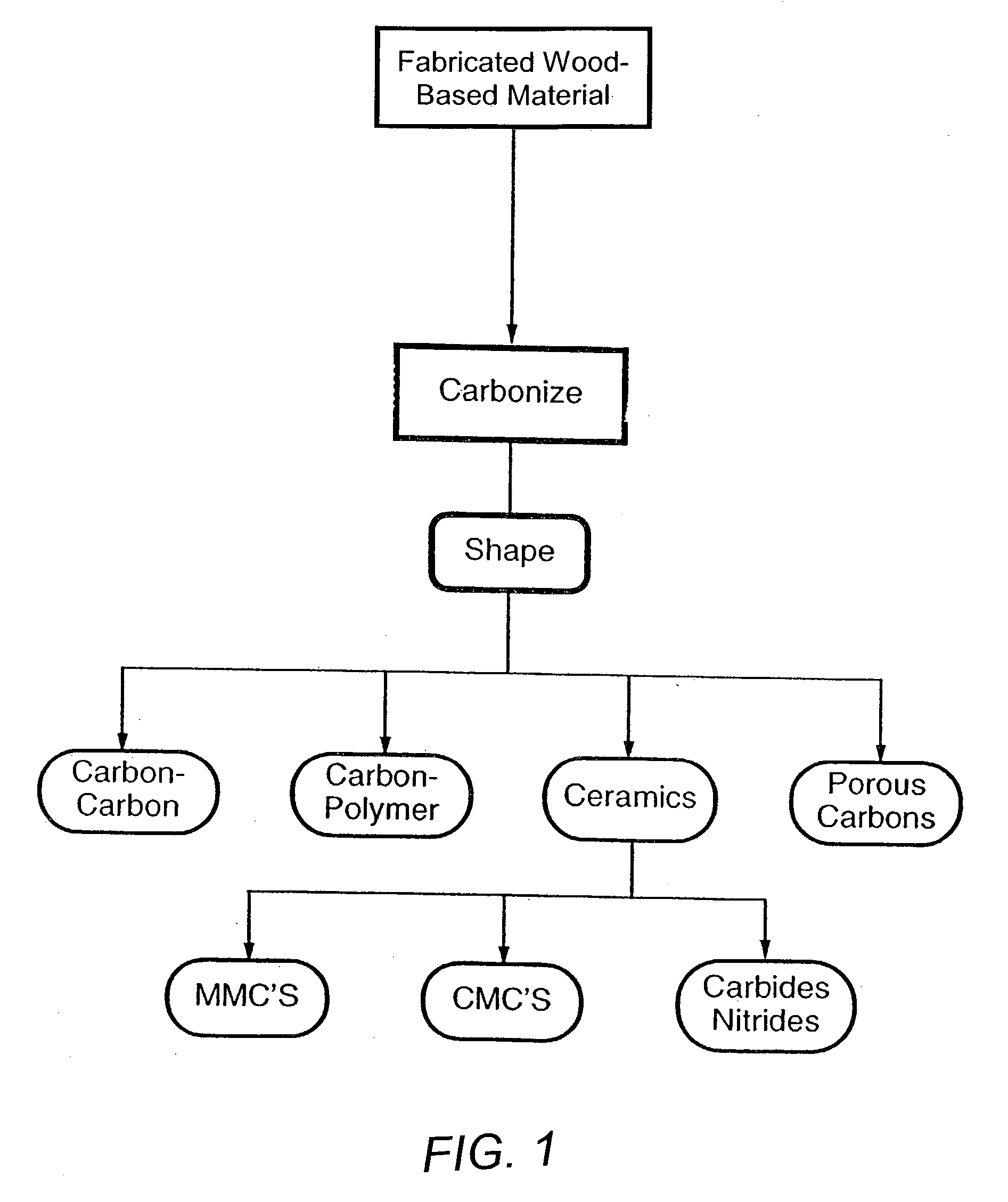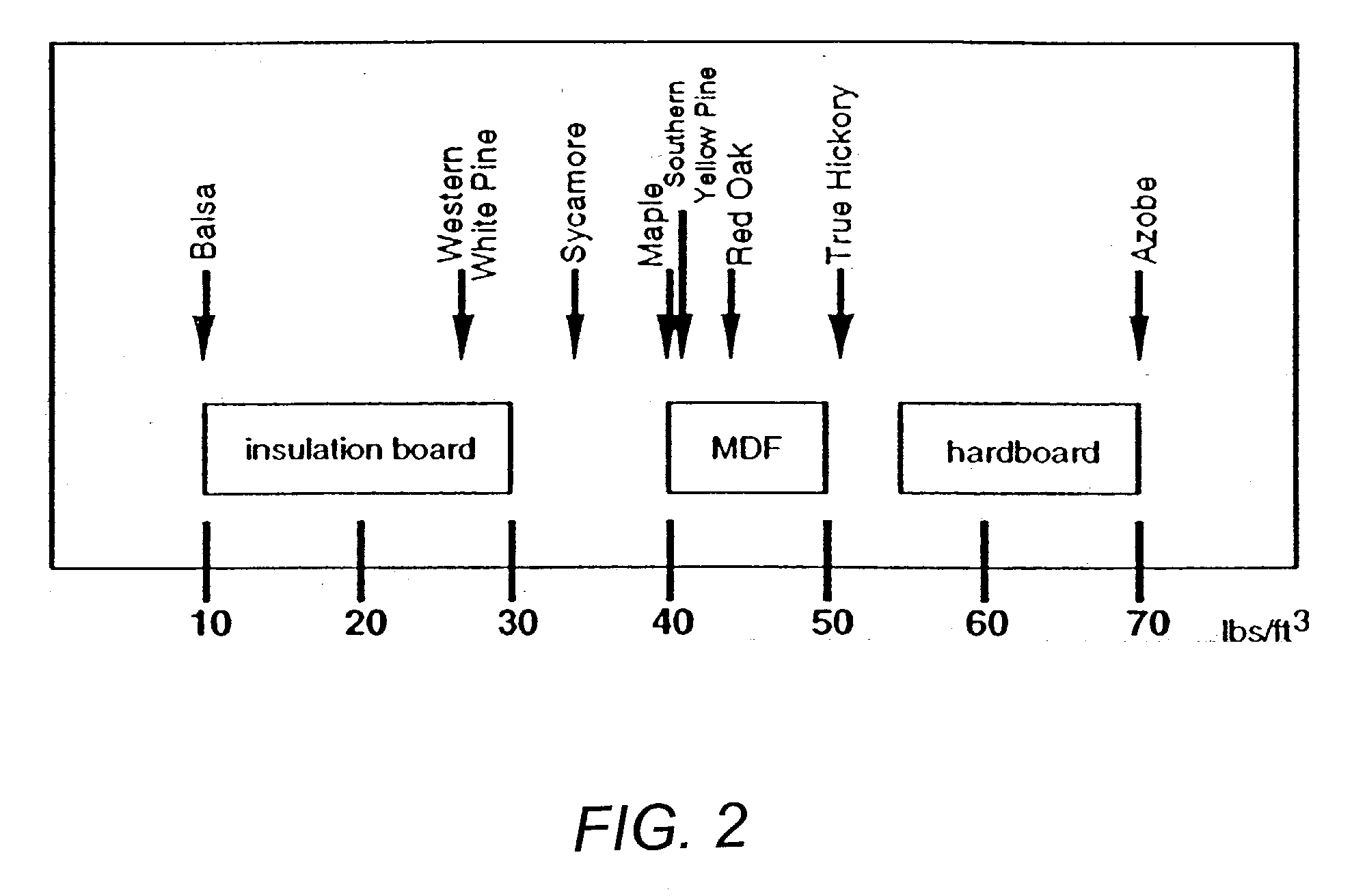Carbonized wood-based materials
a wood-based material and carbon-based technology, applied in the field of carbon-based wood-based materials, can solve the problems of mechanical failure of fibers, one side to be relatively rough, and the stress of bonding is far below the strength of fibers,
- Summary
- Abstract
- Description
- Claims
- Application Information
AI Technical Summary
Problems solved by technology
Method used
Image
Examples
example 2
[0126] Several natural fiber fabrics were carbonized under controlled conditions to produce non-graphitic carbon fabrics. Cotton, muslin, linen, aida and rayon, with no coloring dyes, were all carbonized. In one experiment, carbonized specimens were soaked in a colloidal suspension of alumina (Nyacol AL-20). A vacuum assist was used to assure infiltration. The specimens were allowed to dry thoroughly for days. Then heat treatment in a nitrogen atmosphere to 1500.degree. C. was performed. The specimens were white to gray-white, and intact. XRD analysis detected aluminum nitride (AlN) and some residual alumina (Al.sub.2O.sub.3). FIG. 38 is a photograph of converted aida cloth comprising aluminum nitride.(light) overlying a piece of carbonized aida of coarser weave (dark). The solid carbon fabric acts as a carbon source for reduction of the oxide. When performed in a nitrogen atmosphere above 1400.degree. C. the metal is less stable than the nitride. A similar example was performed by ...
example 3
[0128] Monolithic AlN ceramics were made using pressed wood sawdust as a precursor. A mixture of phenolic resin powder (Varcum 29217), mixed species wood sawdust and alumina powder was pressed into pellets. A series of tests indicated that 20 wt % phenolic provided adequate bonding of the mixture. The ratio of alumina to sawdust / phenolic mix was varied from a carbon-rich ratio, to a stoichiometric ratio, based on expected solid carbon yield of the organics and a one to one (C+O.fwdarw.CO) reduction ratio. Pellets were cured in a hot press at 180.degree. C. for 4 minutes. Carbonization to 600.degree. C. in a nitrogen atmosphere produced pellets which retained their shape. Further heat treatment for 4 hrs at 1550.degree. C. in a nitrogen atmosphere was performed. The resulting pellets ranged in color from gray to white. The degree of whiteness decreased with increasing carbon to alumina ratio of precursor mix. A photograph of carbonized and converted pellets is shown in FIG. 39, with ...
PUM
| Property | Measurement | Unit |
|---|---|---|
| Length | aaaaa | aaaaa |
| Angle | aaaaa | aaaaa |
| Angle | aaaaa | aaaaa |
Abstract
Description
Claims
Application Information
 Login to View More
Login to View More - R&D
- Intellectual Property
- Life Sciences
- Materials
- Tech Scout
- Unparalleled Data Quality
- Higher Quality Content
- 60% Fewer Hallucinations
Browse by: Latest US Patents, China's latest patents, Technical Efficacy Thesaurus, Application Domain, Technology Topic, Popular Technical Reports.
© 2025 PatSnap. All rights reserved.Legal|Privacy policy|Modern Slavery Act Transparency Statement|Sitemap|About US| Contact US: help@patsnap.com



